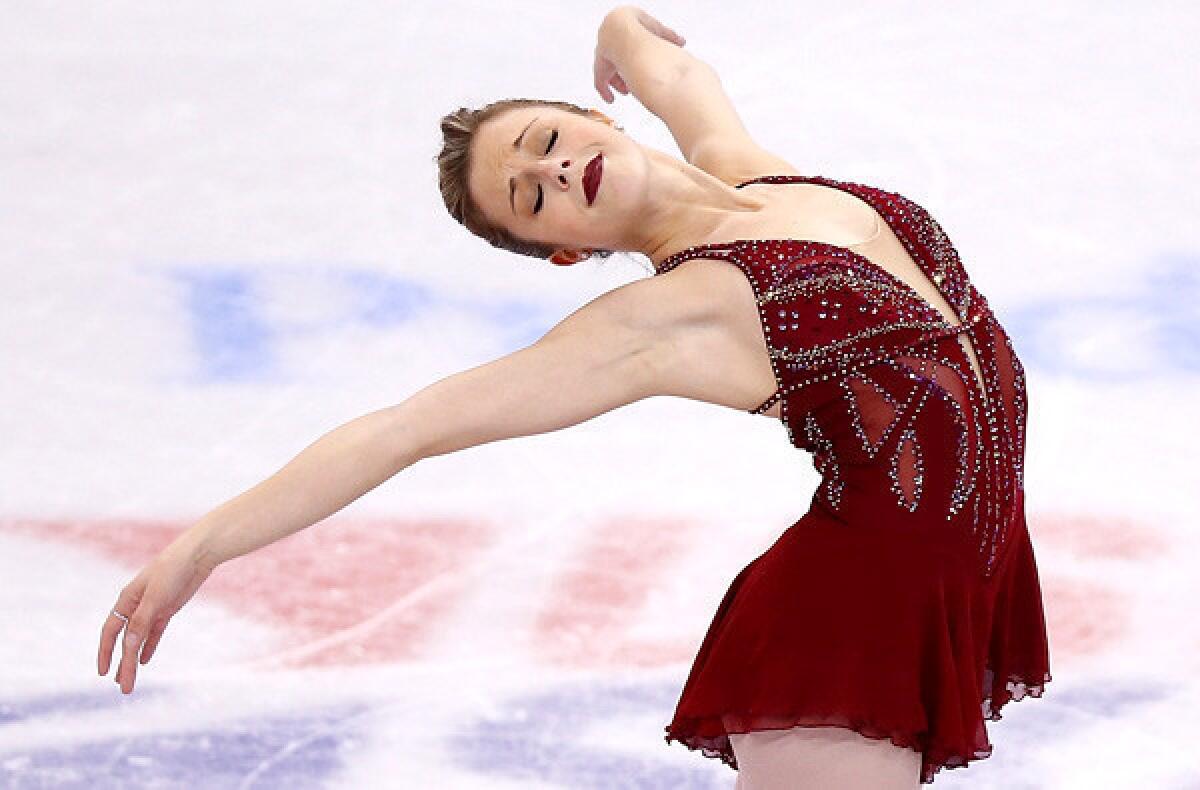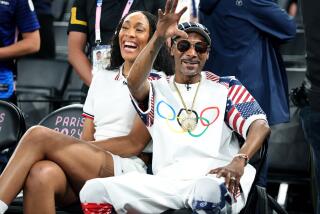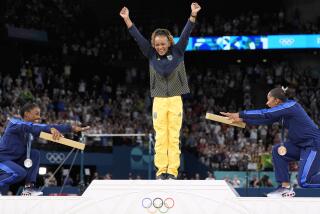U.S. figure skating has slipped badly in viewership

There was an evening at the recent U.S. Figure Skating Championships in Boston when it felt like a time warp.
The crowd for the Saturday night women’s final, the marquee event at the nationals, made the big arena feel full. Even though the 13,980 in attendance fell about 3,000 short of the TD Garden capacity, it was the largest single-session crowd at the nationals since the 18,035 in Los Angeles for the women’s final in 2002.
TV ratings were up more than 20% over last year.
“I feel skating is poised to make a huge comeback,” 1992 Olympic silver medalist Paul Wylie said.
His is a rare voice of optimism about the future of competitive and show skating as spectator events in the U.S., where the sport’s heath is in serious decline.
“A dinosaur,” said Ashley Wagner, two-time U.S. champion and 2014 Olympian. “I am definitely worried for the sport from a business standpoint.”
“Close to death,” said 1988 Olympic champion Brian Boitano, one of skating’s superstars.
“We have lost our audience,” said Peter Carruthers, 1984 Olympic pairs silver medalist. “I see a slow death happening.”
That the Boston nationals briefly defied those dire views was not unexpected. The city is a U.S. cradle of the sport, and the well-connected Skating Club of Boston was all in to help U.S. Figure Skating celebrate its 100th anniversary championships.
“We are back to the point where an audience shows up every four years,” said two-time Olympic champion Dick Button, whose TV commentary helped build the sport’s popularity.
The 2.7 TV rating for the 2014 U.S. championships women’s final was 20% lower than it was in the previous Olympic year. Ratings for that telecast in the 18-to-49 demographic have hovered between 0.5 and 0.7 for five years.
Attendance at the three previous nationals, in Omaha, San Jose and Greensboro, N.C., was far below capacity, with U.S. Figure Skating releasing only aggregate totals for each. Skate America, the U.S. piece of the international Grand Prix Series, rarely fills half the smaller arenas it uses.
It seems appropriate the title sponsor of skating’s only TV series of entertainment shows is Oxytrol, a bladder-control product used mainly by older women.
“That’s our demographic,” said one skater, very grateful for the sponsorship.
ABC was paying USFS a $12-million annual rights fee when its contract expired in 2007. NBC, which took over, pays no rights fee, with USFS getting a share of whatever profit exists. In the most recent tax filing available, for the tax year ending June 30, 2012, USFS reported 12-month broadcasting and licensing revenue of $1.97 million.
The Champions on Ice Tour, which played 70 cities per year in its heyday and was a major income source for many athletes, folded in 2007. The Stars on Ice tour, which had 65 U.S. shows in the 2001 season and 41 in 2010, was down to six last year. It is scheduled for 20 this spring.
“We actually feel bad for these skaters now,” Boitano said. “They don’t know what it was like when skating was rock ‘n’ roll.”
In 1995, there actually was a made-for-TV event called the Rock ‘n’ Roll Figure Skating Championships, with nonskating celebrities judging the competitors, and it got a 13 rating. That was during the brief Wild West era that followed the Knee Whack Heard ‘Round the World, when associates of Tonya Harding put a hit on rival Nancy Kerrigan before the 1994 Olympics.
That affair elevated the sport onto the covers of national news magazines and into the lead story of newscasts for nearly a month. It produced a 48.5 rating for the women’s short program at the 1994 Olympics, right up there with Super Bowl numbers, and it meant TV could not get enough of ersatz and real skating competitions.
“We are very thankful for the opportunities we had, but it may have killed the golden goose,” Boitano said.
How golden? In a five-year deal for U.S. rights to international skating events that ended in 2004, ABC paid $22.5 million annually to the International Skating Union, the global governing body of figure skating and speedskating. ABC then covered the women’s final at the world championships on a live or same-day basis.
Now NBC pays no rights fee. This year it will recap the worlds in a broadcast two weeks after the event.
Comparing anything against the immediate post-1994 bonanza leaves a false impression that figure skating had no audience before then. The truth is the sport began to attract U.S. fans with three-time Olympic gold-medal winner Sonja Henie’s ice shows and films before World War II and grew steadily in popularity before the 1994 explosion.
The final 20 minutes of the live telecast of the Battle of the Carmens (Katarina Witt vs. Debi Thomas) at the 1988 Olympics in Calgary got a 46 rating. The women’s final at the 1992 Olympics, shown on same-day delay, drew a 25 rating in the U.S. The same telecast from the 2010 Vancouver Olympics, live in most of the country, had a 13.6.
Skating’s U.S. decline has been increasingly precipitous in the last decade. In interviews, a dozen leading current and former competitors attributed the downfall to a confluence of factors, with the judging and scoring systems instituted after the pairs controversy at the 2002 Olympics cited as a problem for several reasons.
Among the causes:
The International Skating Union’s control grab in the mid-1990s, which eventually killed the more freewheeling professional competitions that often attracted more interest than Olympic-style competition.
“There was once an amateur competitive side and a pro entertainment side balancing each other out, and the professional side was the marketing arm for skating because we entertained general audiences,” said Scott Hamilton, 1984 Olympic champion and TV commentator.
“The ISU eliminated the need to turn pro, so the pro ranks dwindled and the marketing arm atrophied. Now we are left with half the sport.”
The ISU’s two presidents since 1980 both have been speedskaters. That engenders justifiable criticism that the organization has no comprehension of figure skating’s needs.
“This needs to be two different federations before it’s too late,” Button said.
The current crop of U.S. singles skaters does not include anyone with a world or Olympic medal. No U.S. woman has won either since 2006, no U.S. man since 2010.
The answer as to why may be cyclical success, but without it, the best U.S. skaters have little or no name recognition outside their sport. It wasn’t long ago that the nation was on a first-name basis with many skating stars, women and men: Peggy, Dorothy, Scott, Brian, Kristi, Michelle.
The general fragmentation of TV audiences, and now the Internet audience, in the last quarter-century brings lower ratings for almost everything. It means the only ways to attract attention are with popular, internationally acclaimed champions; the bizarre, like Tonya-Nancy; or a sex symbol such as two-time Olympic champion Katarina Witt of East Germany.
“We need a Michelle, we need a Scott,” Wagner said. “We need to get a star back soon. I don’t think people are going to hold on much longer.”
The scoring system is an incomprehensible mess of decimal points, and the judging still is riddled with the prejudice and reputation-based results the system was supposed to eliminate. How else did Canada’s Patrick Chan win last year’s world title despite turning his bottom into a Zamboni?
Making the judges’ scores anonymous at international events such as the Olympics was an attempt to give judges freedom to mark without national pressure. It has not worked and also has robbed fans of “boo-the-ump” fun by making the judges totally unaccountable to the public. U.S. Figure Skating is introducing a proposal at the next ISU Congress to eliminate the anonymity.
The need to use every second of a program to pile up points with constant but often meaningless movement has sacrificed creativity to math. It leaves no time for what Carruthers calls “brilliant simplicity,” like the eye-catching, 10-second-long spiral that became Kwan’s trademark.
The exhaustive physical demands of top-level long programs in singles also make it extremely hard for skaters to complete them without falls or other major errors. Even relatively flawless performances have become rare.
Agreement is nearly universal among top U.S. skaters, past and present, that the judging system must be changed to allow the sort of expression that distinguishes one skater from another. Others think the sport must find ways to enhance the live experience at competitions. The women’s free skate at nationals can drag on four hours.
“Younger audiences don’t want to watch skater after skater after skater,” Wagner said. “They want a light show, live music, images on a huge screen.”
Hamilton was present at the creation of what became Stars on Ice, when he helped unload trucks for shows that played mainly small-college arenas in the Northeast. He thinks skaters need to go back to building spectator appeal with such grass-roots events, including the club shows that have become a significant source of income for many athletes.
Since winning his first Olympic title in 1948, Button has spent seven decades in skating, as athlete, impresario, commentator, contrarian and sage. He agrees the amount of attention on the sport in the U.S. never has been lower.
“The sport will always be here,” Button said. “It just may not be the same attraction.”
Twitter @olyphil
More to Read
Go beyond the scoreboard
Get the latest on L.A.'s teams in the daily Sports Report newsletter.
You may occasionally receive promotional content from the Los Angeles Times.






